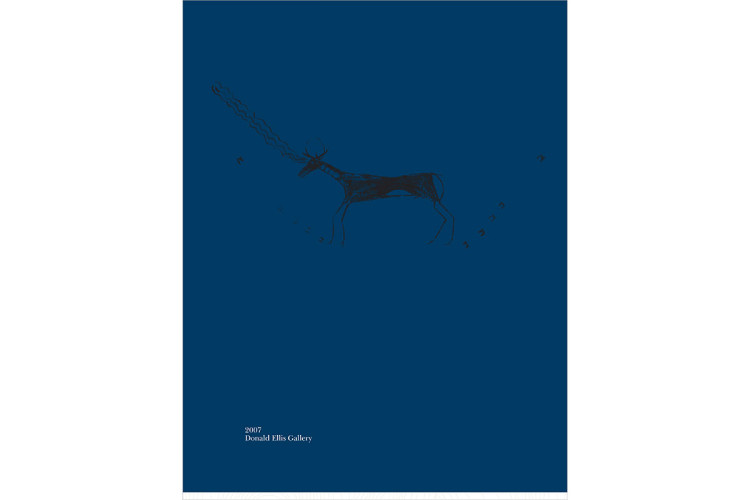
2007
$35.00 USD
ca. 1840
wood
width: 6"
Inventory # N3407
Sold
Vincent Price Art Collection, Los Angeles, CA
Donald Ellis Gallery catalogue, 2007, pgs. 4-5
Evrard, Marcel (et al.) Masterpieces of Indian and Eskimo Art From Canada. Paris: Societe des Amis du Musee de l’Homme, 1969, pl. 82
Macdonald, George, F. Haida Art. Vancouver: Douglas & McIntyre, 1996, pl. 25
Animal form bowls are among the most engaging and varied objects created on the Northwest Coast. Small personal bowls were produced to hold sea mammal and fish oil which served as accompaniments to staple foods such as dried fish, roots and berries.
In the fine example illustrated here, a wolf is depicted in an unusual position, lying on its back, the feet and chin of the animal adjacent to the rim of the bowl. This general configuration is more commonly seen in human image bowls where the bowl cavity is the belly of the figure (see: King, J.C.H. Artificial Curiosities From The Northwest Coast of North America. London: British Museum Publications Ltd., 1981, pl. 80 for an example collected by Captain James Cook in Nootka Sound in the 18th century, and Carlson, Roy L. ed. Indian Art Traditions of the Northwest Coast. Burnaby: Archeology Press, Simon Frazer University, 1983, fig. 10:4 for an archaic example collected at Ozette. Another example is illustrated on this website with inventory number N3406.
In this bowl, the wolf’s head rests on abbreviated ears with its lower jaw carved snugly to the bowl’s outer surface. The long curving tail, which distinguishes the wolf from a bear, arches gracefully away from the bowl surface for most of its length, and touches again near the bowl’s rim. The sculptural formation of the wolf’s eye sockets and snout are Tlingit in style and character, as is the relative size of the eyes and the shape of the eyelids. The style of detailing on the wolf’s head and the very deep relief and lack of two-dimensional design embellishments on the body and limbs combine to suggest a middle 19th century origin for this animated object.

$35.00 USD